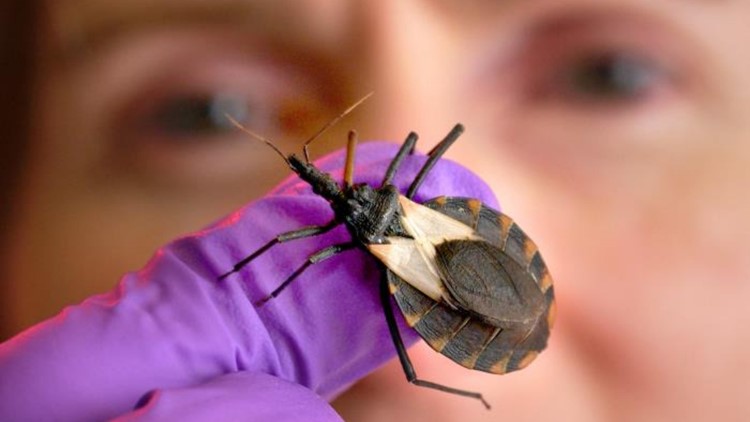A blood-sucking insect that carries a parasitic disease has been found in 29 states, including Arizona, according to the Centers for Disease Control and Prevention.
The “kissing bug" is most typically found in South and Central America but has been sighted in the U.S. as far back as the mid-1800s.
The bugs can transmit Chagas disease, which can cause itching, swelling, welts, hives and fever. A chronic case can cause cardiac and gastrointestinal complications that can be life-threatening.
On April 19, the CDC reported that a disease-carrying kissing bug bit a girl's face in Delaware, which is why you may have seen a bunch of headlines mentioning "deadly kissing bug disease" lately. Fortunately, the child had no ill effects.
The CDC estimates that about 300,000 people with Chagas disease live in the U.S., and most of those people were infected in parts of Latin America where the disease is found.
Many people with the disease may be unaware they’ve been infected, but others may suffer a stroke, heart attack or sudden death, the University of Arizona College of Medicine – Tucson says.
An estimated 20-30% of infected people will develop severe medical problems, according to the CDC. If left untreated, Chagas disease can cause congestive heart failure.
Arizona has the highest number of reported contacts with the kissing bugs in the U.S., according to the American Association of Poison Control Centers. In Arizona, kissing bugs are most plentiful in the southern part of the state, especially in Pima County, the Arizona Department of Health Services says.
Up to 50% of the kissing bugs found in Arizona are positive for the parasite that causes Chagas disease, according to ADHS.
That seems scary, but don’t panic. Chagas disease is still rare in Arizona. ADHS says only 61 people have tested positive for the disease from 2007 to 2018.
Though the bugs that carry the disease do bite people’s faces while they sleep, the real danger comes from their poop.
After the kissing bugs drink the blood, they poop on the person. The CDC says the parasites in the feces can then enter the body through the bite wound or any other break in the skin, or the eyes or mouth.
The disease is not transmitted from person to person or through casual contact with infected people or animals.
However, people can get the disease from organ transplants, eating uncooked food contaminated with poop from an infected kissing bug and accidental laboratory exposure.
A pregnant woman can also pass Chagas disease to her baby. However, the CDC says it is safe for a mother with Chagas disease to breastfeed, unless the mother has cracked nipples or there is blood in the breast milk.
Kissing bugs are mostly active at night and can be found beneath porches, under cement, in outdoor dog houses or kennels, in rodent nests or animal burrows or in chicken coops. If they get indoors, they can hide in cracks and holes in floors, walls, beds or other furniture.
The insects are usually found where packrats, mice, armadillos, raccoons or opossums are abundant.
To protect yourself, seal cracks around the house, clear brush or rock piles near the house, use screens on windows and doors and allow pets to sleep indoors at night.
If you find a bug you think is a kissing bug, do not touch or squash it. The CDC recommends placing a container on top of the bug, sliding it inside and then filling the container with rubbing alcohol. You can also freeze the bug in the container if you have no rubbing alcohol.
Clean any surfaces that may have come in contact with the bug with a solution made of one part bleach to nine parts water.
Then, you can take the bug to your local health department or university laboratory for identification.



